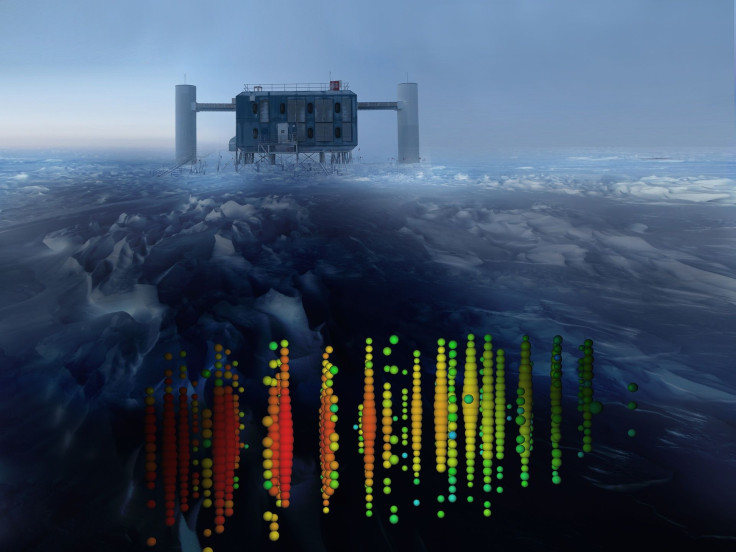Neutrinos From Deep Space: Antarctica Observatory Confirms Existence Of Cosmic Neutrinos

In May 2013, scientists at the IceCube Neutrino Observatory in Antarctica reported the detection of several extremely high-energy neutrinos they believed did not originate in Earth’s atmosphere. The detection suggested that these neutrally charged subatomic particles were born outside our solar system, making them truly “cosmic” in nature.
Now, after more than two years since the discovery, researchers have confirmed the existence of cosmic neutrinos -- ghostly particles that reached Earth after being born in the Milky Way and beyond, and can potentially help scientists understand some of the most distant phenomena in our universe.
“The evidence is important because it heralds a new form of astronomy using neutrinos, the nearly massless high-energy particles generated in nature’s accelerators -- black holes, massive exploding stars and the energetic cores of galaxies,” the University of Wisconsin-Madison, whose researchers are part of the IceCube collaboration, said, in a statement released Thursday.
Neutrinos -- once described as “the most tiny quantity of reality ever imagined by a human being” -- are perhaps the most exotic and least understood of all known subatomic particles. Produced by the decay of radioactive elements, these particles rarely, if ever, interact with matter, making them extremely hard to detect and study. Every second, billions of neutrinos travelling at nearly the speed of light pass through Earth.
“Because they have almost no mass and no electric charge, neutrinos can be very hard to detect and are only observed indirectly when they collide with other particles to create muons, telltale secondary particles,” the university said, in the statement.
This is where the IceCube Lab at the South Pole plays a vital role. With thousands of optical sensors buried deep beneath the Antarctic ice, the lab is the perfect place to detect ghostly particles. Between 2010 and 2012, IceCube recorded more than 35,000 neutrinos. Of these, scientists have now confirmed, 20 have high enough energies to suggest they came from cosmic sources.
Since these “astronomical messengers” -- as the IceCube lab describes neutrinos -- travel across the universe without interference, they are pristine -- faithfully carrying information about the cosmic event that created them. This characteristic makes the detection a significant step toward understanding the origin of our universe and the omnipresent “dark matter.”
“This is an excellent confirmation of IceCube’s recent discoveries, opening the doors to a new era in particle physics,” Vladimir Papitashvili, astrophysics and geospace sciences program director at the National Science Foundation’s Division of Polar Programs, said, in the statement.
© Copyright IBTimes 2024. All rights reserved.












